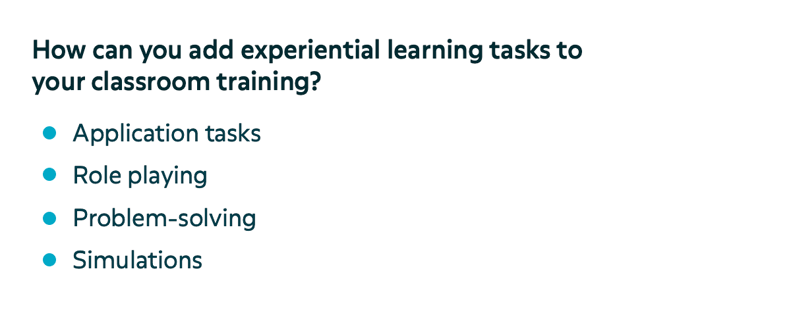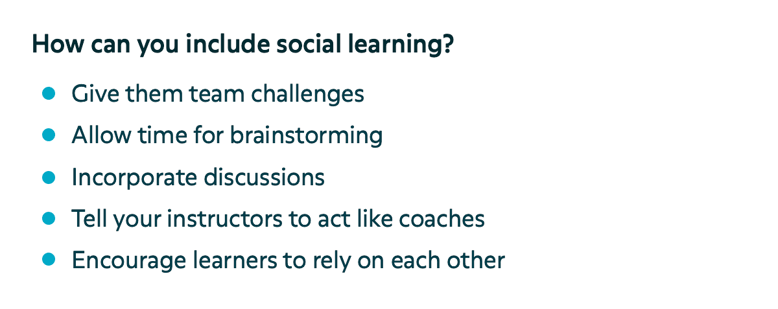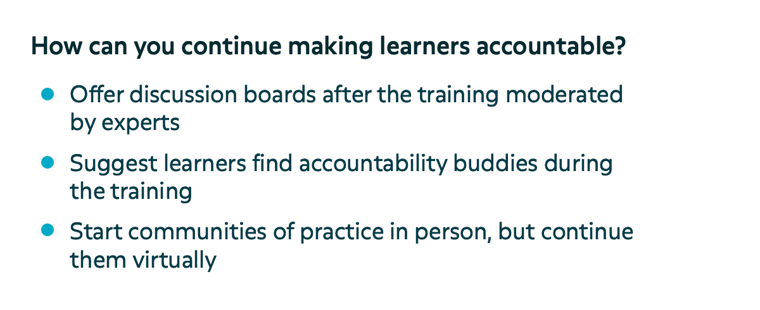How to Incorporate Blended Learning Into Your E-Course
You just finished an amazing one-day, training session. You’re sure it’ll revitalize your practice.
But somehow, a week later, you’re back to your same old routine. Pretty sure you’ve forgotten as much as you remember.
Unfortunately, one-day workshops don’t help our brains learn because they can’t combat the forgetting curve. Is the answer endless flashcards? Or can instructional designers have their cake and eat it, too?
Blended learning programs take the best of both worlds—in-person inspiration combined with brain-based online learning strategies.
With a blended learning model, learners perform activities online and in-person. Usually, the online portion focuses on knowledge retention, while learners work on higher-order thinking skills and experiential learning during in-person classes.
This blog focuses on how incorporating a blended learning model can build critical thinking skills, encourage social learning, and create accountability.
Critical Thinking
Research suggests that you can’t teach critical thinking by itself. Paradoxically, people need large amounts of background knowledge to even start thinking critically. So what’s the catch for eLearning courses?
You need to teach background knowledge before asking learners to think critically.
In blended learning programs, your learners get a cognitive boost by learning essential knowledge online before class. Then, they can use the already memorized knowledge to think critically.
For high stakes learners in aerospace, healthcare, IT, manufacturing, and other hands-on professions, your learners need critical thinking skills to make the best decisions. In-person training provides a space for them to develop these skills through experiential learning tasks, while online learning modules give them the knowledge they need to make good decisions.

Social Learning
Lectures don’t work because they usually overwhelm the human brain’s cognitive load. Our brains can only process 5-7 pieces of information in short term memory at a time.
Blended learning programs solve this problem by sending out online microlearning modules. This frees up cognitive space for learners to engage in social learning because their brains aren’t trying to process new information at the same time. By shifting the lecture portion online, you also have more class time for learners to work collaboratively.

Accountability
Ever have that sinking feeling when you realize only half of your learners completed their required eLearning modules? Online training can easily be pushed to the bottom of the to-do list for so long that it never gets done.
Blended learning programs build accountability because learners need to complete the modules to get the most out of their in-person training. No one wants to be the one dragging down their team or unable to perform the simulation because they didn’t get a chance to go through the online modules. More importantly, blended learning can continue to make learners accountable long after the training is over by jumpstarting virtual communities.
What are Your Next Steps?
With a blended learning model, you disconnect knowledge retention from other forms of classroom learning.
You can transform your classroom from a boring PowerPoint lecture into a hands-on coaching session. A classroom where teams can find innovative solutions to your business’s top problems. One where simulations or roleplaying give learners the chance to practice new behaviors in a safe environment. And, best of all, the learning continues virtually long after they’ve left the classroom.
But this dream can only become a reality if your learners need online solutions to master the material during their day job. Then, they’re ready to think critically about it in the classroom. Otherwise, you just have a classroom full of uninformed people trying to find solutions to problems they barely understand.
BenchPrep’s online learning solution specializes in helping learners efficiently transfer knowledge. With our cloud-configurable platform, you can push eLearning modules out to your learners before class so they can make the most of their training time.
Find out how McGraw-Hill Education leveraged BenchPrep's digital learning platform to maintain its established position as an industry leader.







